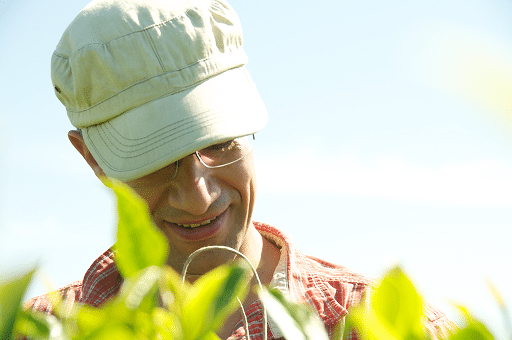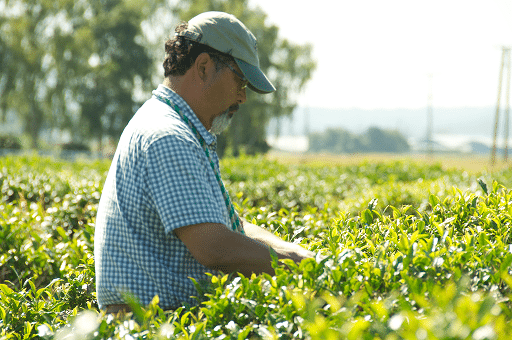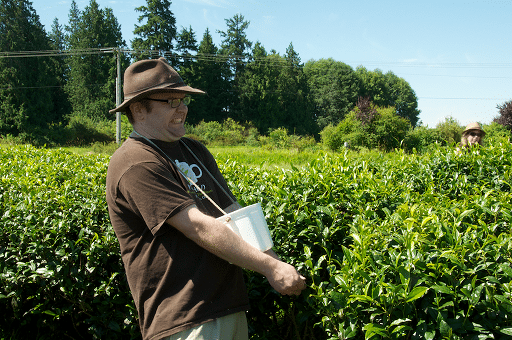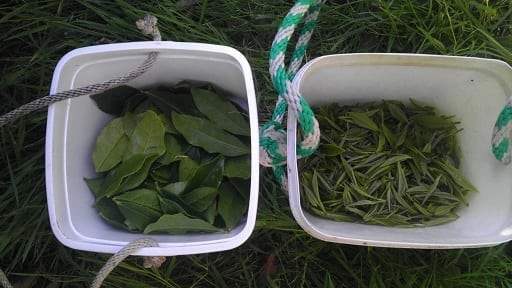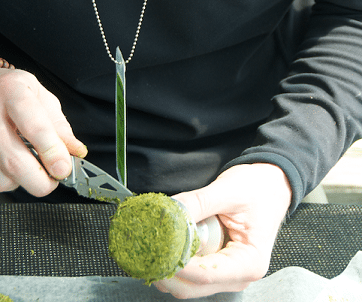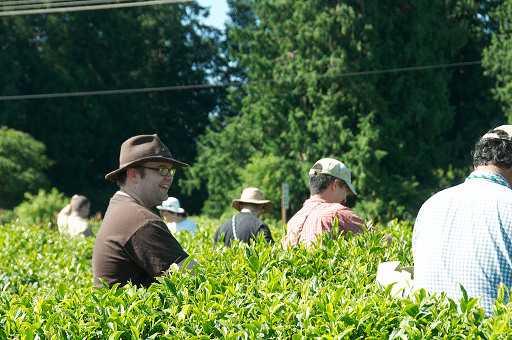The time? April or May-ish. Weather? Typical for Oregon – wet. My mood: Panicky.
My one solace between an impending move, a dreaded upcoming vacation, and a soon-to-be-havoc-y work schedule were tea deliveries. A few vendors were contacting me early to get their early Spring wares featured. I was still determining what my blogging focus was, nor had I decided if I was a “tea reviewer” or a “tea feature writer”. Or just some schmo with a tea blog that everyone’d heard about, but no one actually read.
In the interim, teas sporadically arrived at my doorstep. Over the course of this particular week, I was expecting three different deliveries. I had no idea what would be arriving first, only that something would be arriving soon. On this particular day, I was still in my out-of-season holiday pajamas, slippers and “Pot Head” tea-shirt – mug o’ black in hand.
My brother’s dog waited expectantly to be let outside for his morning “constitutional”. I opened the front door, checked to make sure that the gate was locked, let him loose, and went back inside to nurse my tea.

Then the doorbell rang. That shouldn’t have happened.
Anytime the doorbell rang, and the dog was outside, it usually meant he’d found a way through the gate and was pooping all over the neighborhood. This had happened four or five other times, hence the need for a preliminary “gate-check” before letting him out. While he was friendly – and incredibly stupid – he was also very large. A rampaging Saint Bernard is a scary sight even if he is just pooping…then molesting hapless passersby with doggie kisses of death.
I answered the door, once again expecting a beleaguered neighbor with one hand around the large dog’s collar. Nope, it wasn’t that. It was a short-haired woman in mailman blues with a really guilty expression on her face.
“Um, here’s your package,” she said.
“Thanks?” I said, not even looking at it.
“Um…your dog?”
I narrowed my eyes. “What about him?”
“I…accidentally let him out,” she stammered.
If she wasn’t so Gidget-ly adorable and pathetic, I would’ve decked her with my half-finished tea mug.

“Which direction did he go?” I asked.
Before she could answer, I saw him two houses down. I cursed, went back inside, and dug around for a pair of shoes, and the dog leash. In the meantime, the mail-Gidget had gone on ahead to track the dog down. I came out, still in my PJs, dashing for where the mailwoman had gone. It was a sad sight. Me, that is.
Mailgal successfully cornered the Saint Ber-doofus in a neighbor’s yard across the street. They had gates like ours, and she shut them behind her – keeping him nice and corralled as he urinated on every protruding object.
I called his name, “Abacus!”
He tried to run away, and went into the neighbor’s car port. I held my hand out like I had a snack and knelt down. The dumbass fell for it, and galloped right up to my hand. After getting a grip on his gargantuan head, I snapped the leash around his collar and towed him back to the house.
I gave the mailwoman a stiff, “Thank you.” Then went back inside. The dog loped over to his usual area, then sat down – staring at me.

As if to say, “Gee golly, Geoff. That sure was fun! What’re we gonna do now?!”
My attention, however, was on the package that just arrived. It was from Happy Earth Tea – an outfit out of New York I’d done “business” with in the past. (Dwarven business.) I tore it open without a second thought. Inside were five teas from the 2013 first flush Darjeeling harvest. I went with the one I recognized best and went straight to brewin’.
While there was an Arya Black in the package as well – smelling like a typically lovely first flush with all its spicy verve – I was more drawn to the Risheehat’s uniqueness. There was a nuttiness to the aroma of the dry leaves, as well as a subtly herbaceous lean. The only time I ever ran into that combination was with a Chamong estate first flush. So, naturally – given that it’s, well, me – uniqueness won out.

Brewing this up wasn’t much of a chore. I used 2 tsps. of the green-leaning leaves for a pints-worth of a brew – 205F water for a three-minute infusion.
The liquor brewed up bronze with aromatic steam reminding me of Spring (in a good way). On taste, it was toasty, nutty, with a minor vegetal presence on the finish. And, boy, did the caffeine hit quicker than I thought. Definitely not a tea to have on an empty stomach. In the end, I think I was just about panting. Like a Saint Bernard.
In a Dog-Drinks-Darjeeling world, I’m wearing milkbone pajamas.










 A less sophisticated part of me almost wished there was more smoke and more bergamot. If that were the case, though, I don’t think the palate response would’ve been nearly as even. With the balance struck as it was, both smoke and citrus exhibited their strengths – like teamwork against an approaching zombie horde.
A less sophisticated part of me almost wished there was more smoke and more bergamot. If that were the case, though, I don’t think the palate response would’ve been nearly as even. With the balance struck as it was, both smoke and citrus exhibited their strengths – like teamwork against an approaching zombie horde.

















